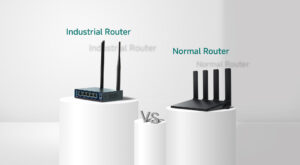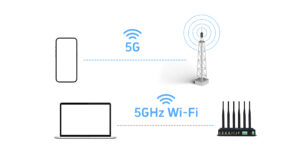In the world of Industrial IoT (IIoT), connectivity is king. But as the number of connected devices grows, so does the need for smarter, faster, and more efficient ways to manage data. Enter the IoT Edge Router—a game-changing device that brings intelligence to the edge of your network.
In this article, we’ll explore what an IoT Edge Router is, how it works, and why it’s essential for modern industrial and cellular networks. We’ll also cover how to tell if your router supports edge computing, so you can make informed decisions for your IoT deployment. Whether you’re managing a smart factory, a renewable energy plant, or a fleet of connected vehicles, understanding edge routers in IoT can help you optimize your operations and stay ahead of the curve.
What is an IoT Edge Router?
An IoT Edge Router is a specialized networking device that sits at the edge of your network, close to where data is generated. Unlike traditional routers that simply forward data, an edge router processes and analyzes data locally before sending it to the cloud or a central server. This approach reduces latency, saves bandwidth, and enables real-time decision-making—critical for industrial and cellular IoT applications.
Key Features of an IoT Edge Router
Local Data Processing
An IoT Edge Router can filter, aggregate, and analyze data locally, reducing the amount of data sent to the cloud. In a smart factory, the router can process sensor data to detect anomalies and trigger alerts without waiting for cloud analysis.
Multi-Protocol Support
Supports industrial protocols like Modbus, MQTT, and OPC UA, enabling seamless communication between diverse devices. It can connect legacy Modbus devices to modern IoT systems without costly upgrades.
Cellular Connectivity
Equipped with 4G LTE or 5G modules, ensuring reliable connectivity in remote or mobile environments. It can provide internet access for solar farms or wind turbines in off-grid locations.
WiFi and Ethernet Options
Offers both WiFi and wired Ethernet ports, catering to different connectivity needs. It can connect wireless sensors and wired PLCs in the same network.
Advanced Security
Features VPN, firewall, and encryption to protect data and devices from cyber threats. It needs to secure data transmission between field devices and control centers.
Why Are Edge Routers Essential in IoT?
Reduced Latency
By processing data locally, edge routers enable real-time responses, critical for applications like autonomous vehicles or robotic arms.
Bandwidth Optimization
Local data processing reduces the volume of data sent to the cloud, lowering bandwidth costs and improving efficiency.
Enhanced Reliability
Even if the cloud connection is lost, edge routers can continue to operate and make decisions locally.
Scalability
Edge routers make it easier to scale IoT networks by distributing processing power across multiple devices.
How to Tell If Your Router Supports Edge Computing
Not all routers are created equal. If you’re wondering whether your router supports edge computing, here are some key indicators to look for:
First, Check the Processor and Memory
Edge computing requires significant processing power. Look for routers with multi-core processors (e.g., ARM Cortex-A series) and at least 1GB of RAM.
Example: A router with a quad-core processor and 2GB RAM is likely capable of edge computing tasks.
Second, Look for Local Data Processing Features
Edge routers can run applications locally. Check if your router supports Docker containers or other lightweight runtime environments.
Example: A router that allows you to deploy custom apps for data filtering or analytics is likely an edge router.
Third, Review the Operating System
Edge routers often run on Linux-based operating systems that support custom software and applications.
Example: If your router’s OS allows you to install and run third-party apps, it may support edge computing.
The Future of Edge Routers in IoT
As IoT continues to evolve, edge routers will play an increasingly important role. With the rise of 5G and AI, these devices will become even smarter, enabling faster data processing and more advanced applications. Whether you’re building a smart factory, a connected city, or a renewable energy plant, an IoT Edge Router can help you unlock the full potential of your IoT network.
Conclusion
An IoT Edge Router is more than just a networking device—it’s a powerful tool that brings intelligence to the edge of your network. By processing data locally, supporting multiple protocols, and providing reliable connectivity, edge routers are essential for modern industrial, cellular, and IoT applications.
If you’re looking to optimize your IoT network, consider the benefits of an edge router. And if you’re ready to explore more about industrial routers, cellular connectivity, or Modbus gateways, check out our related pages for in-depth insights and solutions.


